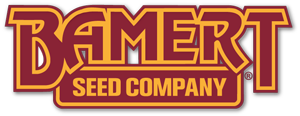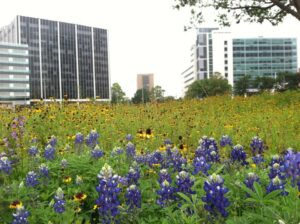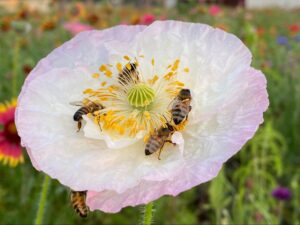Part 1: Selecting Your Seed and Seeding Rate
Many of our customers look to our pasture seed for erosion control. For us at Bamert Seed, this is a chance to do one of the things we love most: helping people. As Reclamation Specialists, we enjoy the opportunity to help customers select the best pasture seed to achieve a common goal: establish vegetation where it does not exist. However, no two customers are ever the same, because we are tasked with taking any combination of environmental conditions and pairing it with the tools our customers have at their disposal.
In an effort to offer a reasonable expectation of success when trying to establish native plants from pasture seed, the first question we ask customers is: What are you wanting to accomplish?
Answers can vary from maximizing rate of gain with pasture seed to drawing in honey bees and Monarch butterflies with pollinator seed. No matter what a customer visualizes on their property, the intended job for the plants will be a major determining factor behind which species is put into the ground. Additionally, we have to consider:
- Soil type
- Climate
- Geographic conditions
- Warm or cool season
- Annual or perennial
- Average annual rainfall
This helps to narrow down the list of pasture seed species that are appropriate to help customers achieve their goals and ensure erosion control.
We also understand the importance of working within a budget. The native seed business is driven by supply and demand. If a desirable plant is relatively easy to grow and tends to persist in an area over time, it’s probably because it is hardy and efficient at making seed. Such a plant would tend to have quite a bit of seed available commercially, creating a more competitive market and driving the price down. Plants that are not as common, likely are not as good at making viable seed and are more expensive, if they are commercially available at all.
The availability of seed directly affects the price and the ability to stay at or below budget. If customers want to plant something that is rare, we are glad to try to help, but we help them understand this will significantly increase the cost per acre. Seeding rate is a topic important to include in planning and budgeting. Whether it be an agricultural job or a reclamation job in the energy sector, many of our customers approach us with specs written by various agencies. Many of these specs include seeding rates that were developed with the primary goal of establishing a plant population that will reduce wind erosion.
If you are satisfied with three plants per square yard and slower establishment, then these rates should work fine. If you are depending on the successful establishment of vegetation to get paid on a construction job or are depending on grass to feed your livestock, the land will most likely support a higher plant population than most published rates call for and under normal circumstances, increasing the rate should help it establish sooner. Of course, increasing the seeding rate will increase the cost per acre and should be weighed against the value placed on the goal. It is possible to reduce the seed cost for a project by decreasing the seeding rate, but it is unlikely the results will satisfy the customer.
After we have helped a customer decide what best to plant, and how much to plant based on their vision, it is then time to figure out how to proceed with planting.



